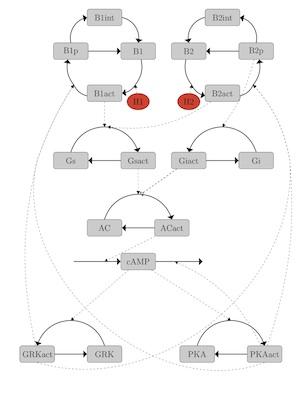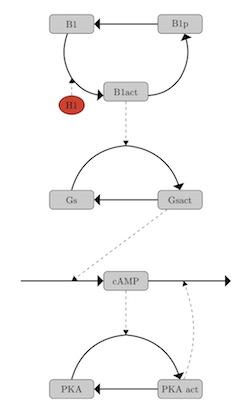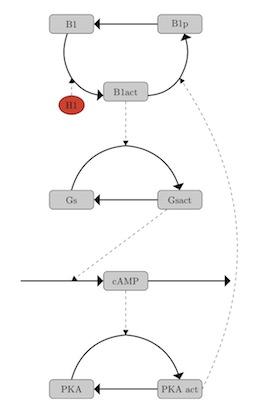De- and Resensitisation of β-Adrenergic Receptor Signaling
In the healthy adult heart cardiac β-adrenergic receptors control the force and speed of contraction when exposed to catecholamines such as adrenalin and noradrenalin. The response from the cell is a rapid rise in production of cAMP and contraction force, and later a rapid fall in sensitivity to activation, called a desensitisation. Presumably, the desensitisation protects the heart from mechanical strain during long lasting exposure to agonists, but in patients suffering from heart failure the desensitisation becomes chronic and compromises the proper function of the heart. In fetal hearts, the situation is the opposite: activation of the receptors seems to sensitise the signaling pathway rather than desenstise it.
No one has yet been able to isolate the dominating step in the signaling pathway for the desensitisation response, and it has been proposed that many different factors together change the behavior between the fetal and the adult heart. In order to gain a deeper understanding of the interactions between the elements, a mathematical model describing the signaling pathway has been constructed.
Three models have been constructed

The original model was constructed according to the simplest possible biological explanation, but till contained many parameters.

Minimal model 1
A model without the phosphorylation feedbacks can still describe the desensitisation, if there is a feedback catalysing the degradation of cAMP.

Minimal model 2
Likewise can a model lacking the feedback for cAMP breakdown but having an intact phosphorylation feedback loop describe the desensitisation.
Pictures available on the download page.
Responsible for this page:
Director of undergraduate studies Biology
Last updated:
06/15/11
